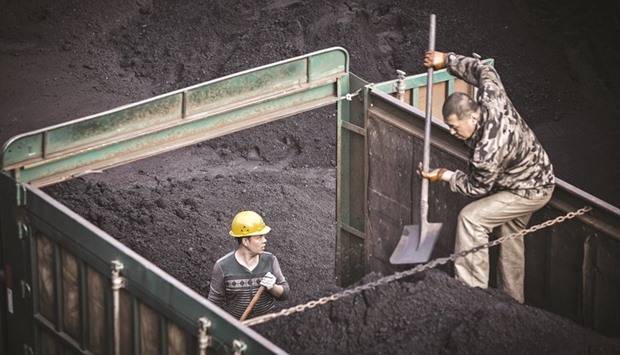Future shipments of liquefied natural gas from the US to northwest Europe may hinge on the actions of coal miners thousands of miles away.
That’s according to research from energy consultant Wood Mackenzie Ltd. A continued slowdown at Chinese mines would extend a 54% rally in European coal this year. That, in turn, will force natural gas prices higher in the region. If this combines with a revival in US coal, it could make Gulf Coast LNG exports competitive in Europe.
“Coal might be in demise but understanding the global coal market has never been more important,” Noel Tomnay, head of global gas and LNG at WoodMac, said in an interview in London. “The future of US LNG over the next year will be set by the pace of response of coal markets in the US and China.”
The link between China’s mining industry and the European gas market highlights the forces at play in global energy markets as governments try to reduce pollution from carbon-rich coal. The rise of shale-gas production in the US has added another variable into the mix after the start of LNG exports from the Gulf of Mexico this year. That fuel hasn’t yet reached northwest Europe, where most imports come from Norway, Russia and Qatar.
China’s slumping coal production and rising imports are sending shock waves globally, pushing European prices to their first yearly gain since 2010. That’s led to increased demand for gas, a rival power-plant fuel, and helped exacerbate regional supply issues to trigger a 34% increase in the benchmark UK contract this year.
Chinese output will probably fall by 8.2% to 3.4bn tonnes this year, and slip another 0.5% in 2017, according to Perret Associates Ltd, an industry consultant in London.
“China shifting a little bit can have a bigger impact on European prices than you would expect,” said Matt Brown, an analyst at Poeyry.
Coal is being shunned in some developed nations, while it’s seen as a means to meet surging electricity demand in parts of the developing world. In the UK, gas has displaced coal for most of the time thanks to a minimum carbon price that punishes greenhouse-gas emissions. The fuel is also starting to lose its appeal in mainland Europe.
China’s coal production in the first eight months of 2016 fell more than 10% from a year earlier amid efforts to remove oversupply and promote less-polluting fuels. As the winter approaches and prices soar, the government is seeking to revitalise the industry by relaxing mining restrictions.
In the US, the world’s biggest producer after China, things also look gloomy, with output sliding 22% so far this year. Gas prices are rallying thanks to higher demand and supply bottlenecks, meaning a stronger call on coal next year than at any other time in the shale era, according to Tomnay.
The nation’s coal demand will outstrip supply, including imported fuel, by about 5% next year, according to Doyle Trading Consultants, a New York City and Grand Junction, Colorado-based boutique energy research firm that specializes in the coal sector. Coal generation may gain 20%, which would require supply from stockpiles and higher output from Powder River Basin, the biggest producing region, according to WoodMac.
US coal production is forecast to recover in 2017 after a slump in the previous two years, according to the US Energy Information Administration’s Short-Term Energy Outlook published in September.
The revival isn’t certain as the market may not be quick to respond after mine closures and redundancies, Tomnay said. That would mean an upside risk to US gas next year, with prices potentially reaching $4 per million British thermal units, which would be bad for US LNG exports, he said.
US gas futures gained 37% this year to trade near $3.21 on Thursday. The UK premium over US gas prices narrowed to a record in August, discouraging US LNG shipments to Europe. If prices fall below $2.9, which is possible in the summer, “US supply will largely be called upon to meet as much European demand as possible,” according to Energy Aspects Ltd’s Global LNG Outlook.
The world’s biggest LNG buyers are already focusing more on coal, which is set to remain a dominant fuel in power generation globally through 2025, according to BMI Research. Jera Co, a venture between two of Japan’s biggest utilities, agreed to buy EDF Trading Ltd’s coal-trading business, which will help it gain expertise for future LNG and power trading.
“We’ll be watching coal markets very closely,” Tomnay said.

Employees unload coal from a truck at a coal mine and processing facility in Liulin, Shanxi province, China. A continued slowdown at Chinese mines would extend a 54% rally in European coal this year. That, in turn, will force natural gas prices higher in the region. If this combines with a revival in US coal, it could make Gulf Coast LNG exports competitive in Europe.


